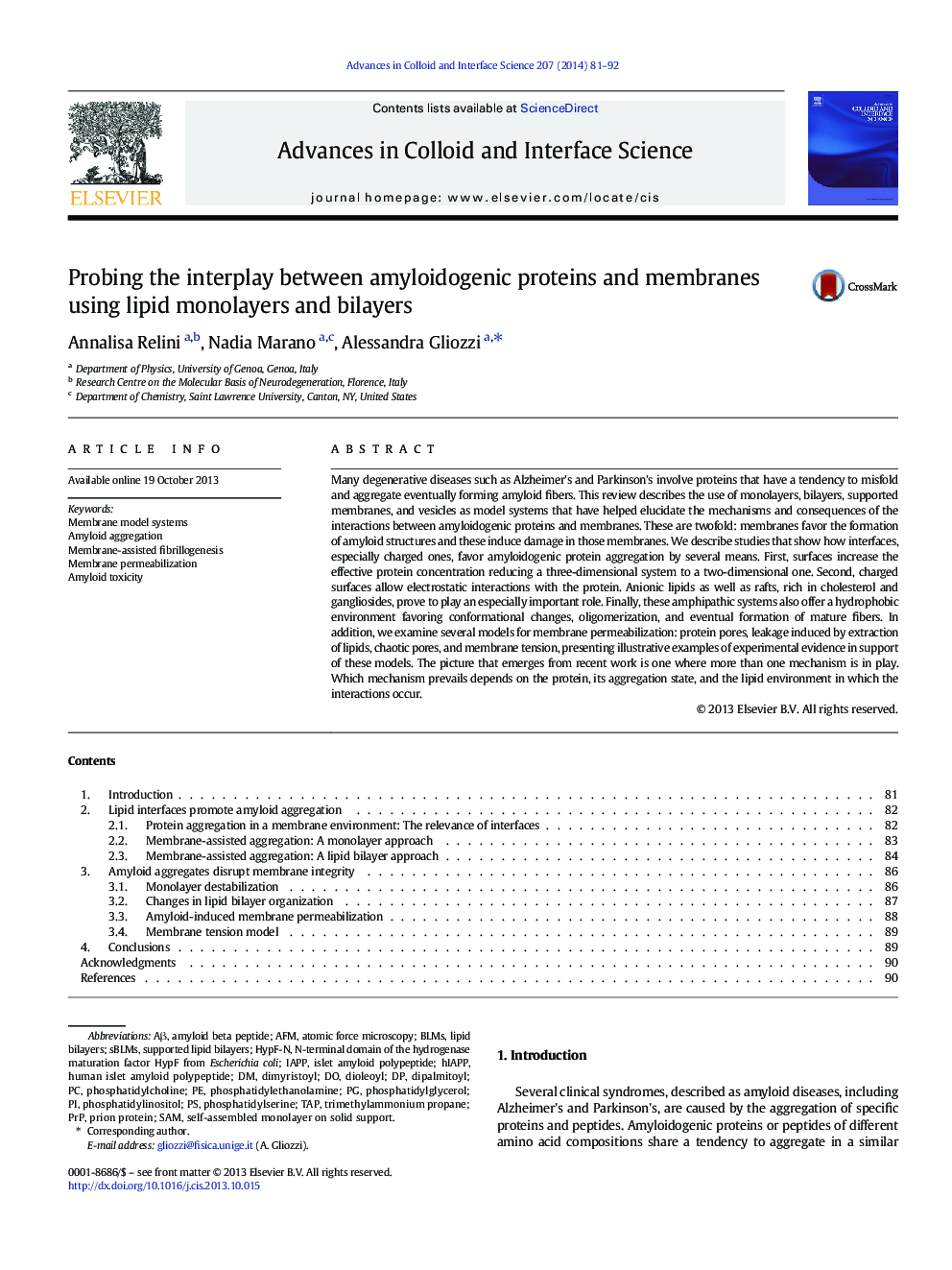| کد مقاله | کد نشریه | سال انتشار | مقاله انگلیسی | نسخه تمام متن |
|---|---|---|---|---|
| 590793 | 1453556 | 2014 | 12 صفحه PDF | دانلود رایگان |
• Lipid mono- and bilayers are useful models for studying membrane/protein interactions.
• Membranes promote amyloidogenic protein conformational change and aggregation.
• Electrostatic and hydrophobic interactions and crowding favor aggregation.
• Amyloidogenic protein/membrane interactions induce permeability changes.
• Several possible models of permeabilization are presented.
Many degenerative diseases such as Alzheimer's and Parkinson's involve proteins that have a tendency to misfold and aggregate eventually forming amyloid fibers. This review describes the use of monolayers, bilayers, supported membranes, and vesicles as model systems that have helped elucidate the mechanisms and consequences of the interactions between amyloidogenic proteins and membranes. These are twofold: membranes favor the formation of amyloid structures and these induce damage in those membranes. We describe studies that show how interfaces, especially charged ones, favor amyloidogenic protein aggregation by several means. First, surfaces increase the effective protein concentration reducing a three-dimensional system to a two-dimensional one. Second, charged surfaces allow electrostatic interactions with the protein. Anionic lipids as well as rafts, rich in cholesterol and gangliosides, prove to play an especially important role. Finally, these amphipathic systems also offer a hydrophobic environment favoring conformational changes, oligomerization, and eventual formation of mature fibers. In addition, we examine several models for membrane permeabilization: protein pores, leakage induced by extraction of lipids, chaotic pores, and membrane tension, presenting illustrative examples of experimental evidence in support of these models. The picture that emerges from recent work is one where more than one mechanism is in play. Which mechanism prevails depends on the protein, its aggregation state, and the lipid environment in which the interactions occur.
Figure optionsDownload as PowerPoint slide
Journal: Advances in Colloid and Interface Science - Volume 207, May 2014, Pages 81–92
